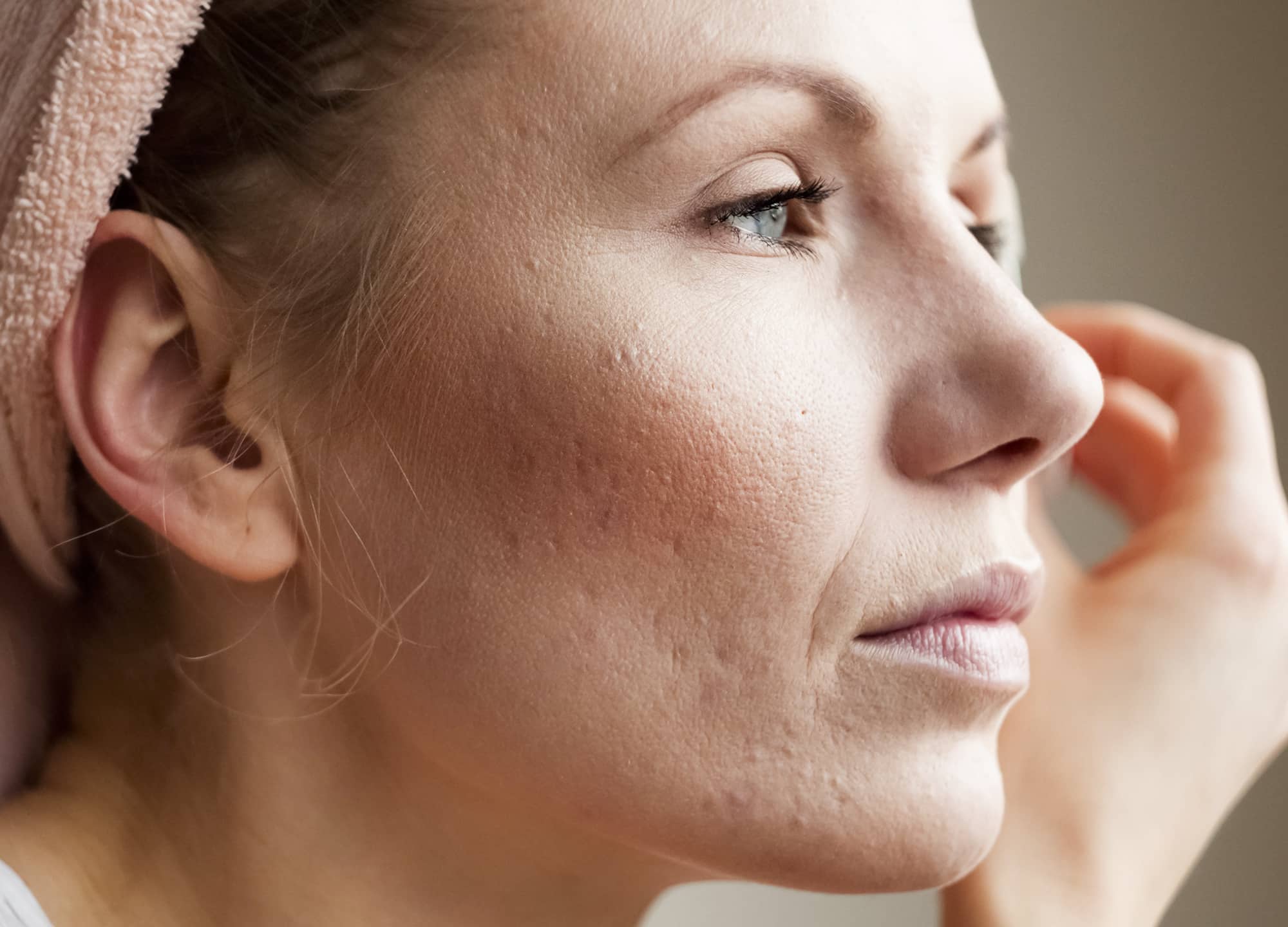Back in 2018, the U.S. Food and Drug Administration (FDA) cleared a new in-office treatment to permanently end acne—but you probably didn’t hear about it. Relatively new to the States but a staple in Europe, Sebacia is an acne treatment that, according to New York City board-certified dermatologist Dr. Jennifer Chwalek, uses inert gold microparticles to selectively target and destroy the sebaceous glands, which produce the sebum that clogs pores and leads to breakouts. Studies show that it can offer long-term results in the ever-lasting battle against acne—better still, without the caveats of treatments like antibiotics and Accutane. But if that’s the case, why isn’t it making headlines? Here’s what you need to know.
How does the Sebacia acne treatment work?
Anyone who’s ever had a pimple knows that sebum (skin’s natural oil) plays a big role in breakouts. “There’s a block in the sebaceous follicles, which allows sebum to build up behind it, then it ruptures, and bacteria and inflammatory cells get involved,” explains Dr. Sheryl Clark, a board-certified dermatologist based in New York City. “So all that inflammation results in cysts and papules, and the block in the duct itself leads to the whiteheads and the blackheads.”
Sebum is a major component in that acne-formation process, since it helps plug up the follicles and clog the pores. So it stands to reason that “if you could do something to get rid of the sebum component of the acne, then the acne’s going to get better,” says Dr. Clark.
Getting rid of the sebaceous glands is a multistep process. “The gold microparticles are in a suspension that is massaged into clean skin and allowed to absorb into the oil glands,” explains Dr. Chwalek. “The skin is then treated with a laser—usually a diode or Nd:YAG—which by the process of selective photothermolysis heats the pilosebaceous glands and slowly destroys or shrinks the oil glands.” In other words: The laser heats up the gold particles, which injures the oil gland.
Its benefits go beyond clearing acne. It can also help minimize the appearance of pores and tamp down greasiness. “The reason that people have large pores is that the sebaceous glands are large and present,” says Clark. If you make the gland smaller or help it disappear altogether, the pore will similarly shrink. Your skin may also become less oily, since your primary oil producers are put out of commission.
Related: Why I’ll Never Get a Cortisone Shot for Acne Ever Again
The upsides of Sebacia
One good thing is that the side effects are minimal. “With Sebacia, there aren’t the same worrisome side effects that can sometimes occur with traditional acne medications, especially oral antibiotics or isotretinoin,” says Dr. Chwalek. And sure, while destroying your sebaceous glands sounds risky—and like a recipe for dryness—that’s not the case. “There’s transient redness for 20 minutes but no dryness or eczema,” says Dr. Clark. That’s because you’re not obliterating every single oil gland in your skin, simply reducing their number.
On top of that, patient compliance isn’t an issue. “It’s an in-office treatment, versus topicals or medications—patients often forget to take them or use them or get lazy and lose motivation and stop too early,” says Dr. Chwalek. Once you’ve done three sessions, you’re good to go.
The downsides of Sebacia
The effects of Sebacia take a relatively long time to become apparent. “In the studies, patients started to see improvement by 10 to 12 weeks,” says Dr. Chwalek. “A nonrandomized European registry study showed an average improvement in acne lesion count of 65% at three months, 74% at six months, and 85% at 12 months.” So, it’s far from a quick fix. For that reason, both Dr. Clark and Dr. Chwalek recommend combining Sebacia with an adjuvant acne treatment that works faster, be it retinoids or light therapy.
Then there’s the price (typically ranging from $400 to $600 per session), which may not be covered by insurance. “The cost can be prohibitive for some patients, especially considering that it may not result in a lasting remission and may require adjuvant acne treatment for months after—compare this to Accutane, which is often covered by insurance and has good long-term efficacy after a five- to six-month treatment,” says Dr. Chwalek. Sebacia consists of three treatments over the course of two weeks, which can add up.
Also, the verdict is out on the discomfort factor. “I’ve had very few patients complete the recommended three sessions,” says Dr. Chwalek. “Since it uses a laser, there are the risks that come with laser treatments–crusting and blistering, discoloration, temporary swelling and redness.” Dr. Clark, on the other hand, reports that her patients find it fairly tolerable. “It can sting, but I haven’t had anybody want to stop the treatment,” says Dr. Clark. On the 10-point scale of pain, with 1 being painless and 10 being unbearable, the average is 4, she says.
Besides the above, there’s another big reason you might not yet be familiar with Sebacia. Namely, it’s just one of many promising acne treatments coming onto the market. “There is now a topical form of minocycline [one of the main oral antibiotics for treating acne],” says Dr. Chwalek. “It’s a foam that is effective and reduces the side effect profile of the oral medication.” Plus, she explains, the FDA just approved a new topical retinoid, which some studies show may treat both facial and body acne in as little as two weeks, and there’s a new topical testosterone blocker in development that can reduce sebum production.
Ultimately, says Dr. Chwalek, “Sebacia has a lot of competition from other, newer acne treatments that have proven efficacy and better safety and tolerability profiles.”
Related: 14 Skin-Care Ingredients for Busting Cystic Acne
Should you get the Sebacia acne treatment?
The good news is that this treatment is pretty versatile. “Ideal patients have mild to moderately severe inflammatory acne that is recurrent,” says Dr. Chwalek. That can be the case if you’ve tried topicals or oral medications (like antibiotics) that didn’t quite cut it—or maybe they did work but you don’t want to be using benzoyl peroxide for the rest of your life.
Another common demographic for those seeking out the treatment includes those who may not even have acne—that is, “anyone who has oily skin or large pores, with or without acne,” says Dr. Clark. And finally, it could also work for those with hormonal acne, which, she says, doesn’t always respond well to Accutane.
Ultimately, if you’ve tried all the other options out there, Sebacia may indeed do the trick for you. You’ll just have to be patient to see results.











